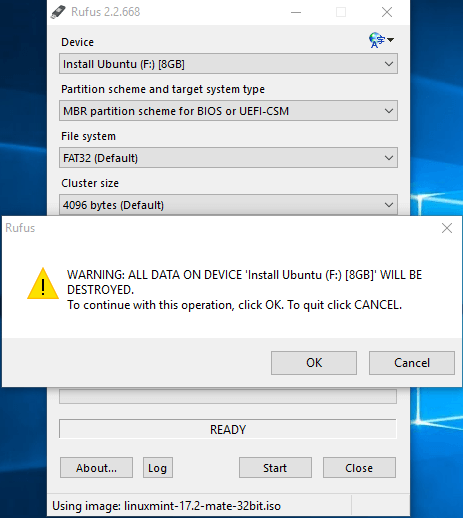

It has no bearing on the file system that the OS uses after installation.įor instance, current consumer Windows installations always uses NTFS as the main file system (for the main Windows system partition), regardless of whether the media you created in Rufus uses FAT32 or NTFS.Īnd likewise, Linux will be installed using ext4 (most commonly), regardless of whether the installation media had NTFS or FAT32. That is the file system used by the USB installer. While Windows stores its paging file as a file on its main system partition, Linux just reserves a separate empty partition for swap space.When I use Rufus to create a USB stick I have two options: FAT32(Default) and NTFS.

Swap is used as "scratch space" by the Linux kernel to temporarily store data that can't fit in RAM. It's used as virtual memory and doesn't have a file system structure.

It can be enlarged, but not shrunk, on the fly. XFS was developed by Silicon Graphics in 1994 for the SGI IRX operating system, and was ported to Linux in 2001. It's similar to Ext4 in some ways, as it also uses delayed allocation to help with file fragmentation and does not allow for mounted snapshots.Ubuntu uses ZFS by default for containers. Ubuntu now offers official ZFS support starting with Ubuntu 16.04, too. However, you can install ZFS support on any Linux distribution. Sun open-sourced ZFS under the Sun CDDL license, which means it can't be included in the Linux kernel. Each file has a checksum, so ZFS can tell if a file is corrupted or not. ZFS supports a lot of advanced features including drive pooling, snapshots, and dynamic disk striping-BtrFS will bring many of these features to Linux by default.

ZFS was designed by Sun Microsystems for Solaris and is now owned by Oracle.Related: How to Install and Use ZFS on Ubuntu (and Why You'd Want To)


 0 kommentar(er)
0 kommentar(er)
